Hummingbirds, the jewels of the sky, excite the senses of the people who see them. When can residents of California expect hummingbirds to return to their neighborhoods? Some of these beautiful birds live in parts of the state year-round, while others migrate south, or at least to different elevations in the fall and winter. The arrival of migratory hummingbirds in California largely coincides with the blooming of flowers in the late winter to early spring. However, timing varies by both the species and the location.
Hummingbirds That May Stay All Year
Some of California’s hummingbirds tend to stay in the region all year long. The likelihood of the birds sticking around depends largely on the availability of food sources. Hummingbirds with ample access to blooming flowers or feeders throughout the fall and winter may stay on as residents. Hummingbirds residing in southern and coastal California, where the weather stays more favorable, are more likely to remain in place than those that live in the northern or more mountainous regions.
Anna’s Hummingbird
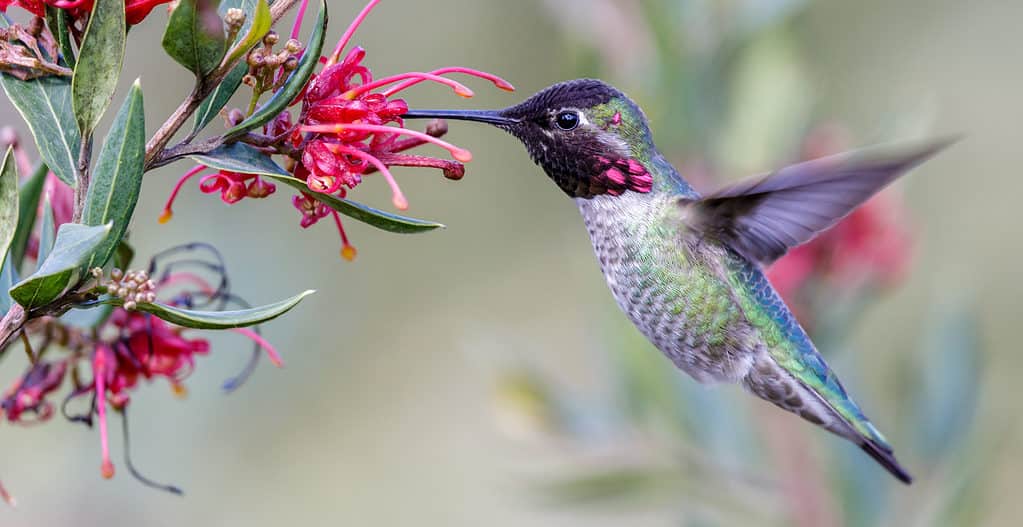
The Anna’s
Hummingbird
tends to maintain residence in California all year.
©yhelfman/Shutterstock.com
One of the most abundant hummingbirds throughout California, the Anna’s Hummingbird, tends to stay in the state all year long. Like many tropical birds, this hummingbird migrates up and down to different elevations as the seasons progress. If you see a hummingbird in the winter outside of southern or coastal California, it is probably an Anna’s Hummingbird.
Allen’s Hummingbird
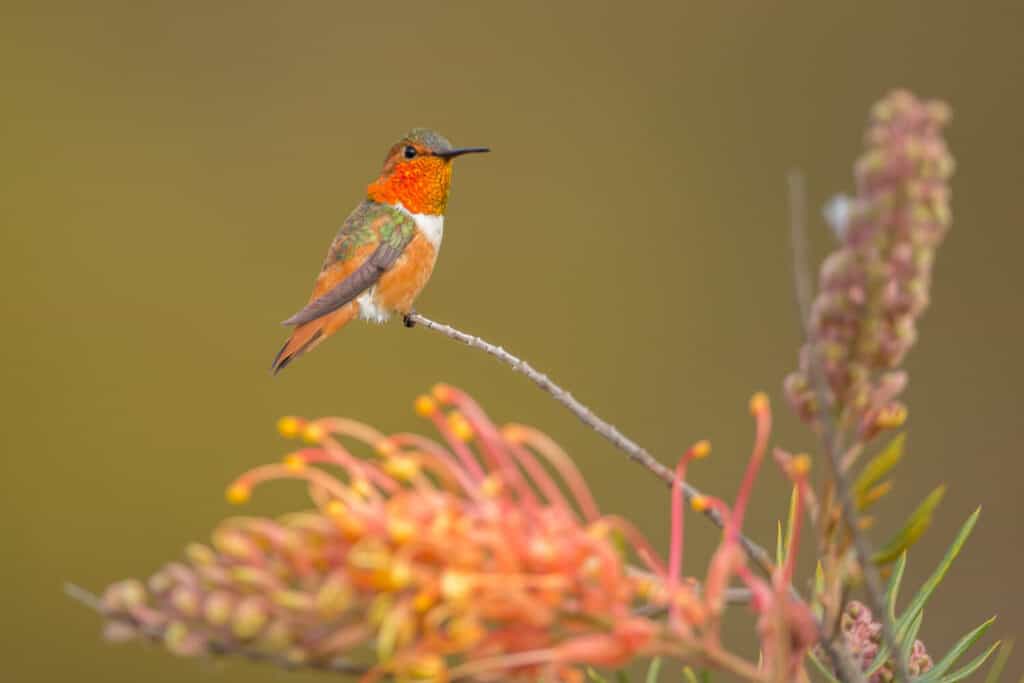
The Allen’s Hummingbird tends to migrate early in the season if at all.
©Keneva Photography/Shutterstock.com
A small population of the Allen’s Hummingbird maintains year-round residence in far southern California in the Channel Islands and the adjacent mainland. Other members of the species migrate to breeding grounds in coastal areas of California to the north. They arrive in late winter and migrate south again when their breeding season ends.
Costa’s Hummingbird

The Costa’s Hummingbird begins nesting in January when desert flowers begin to bloom.
©Takahashi Photography/Shutterstock.com
The Costa’s Hummingbird maintains a resident population in far southern California and into Mexico. Migrants arrive in California early, around the middle of January. The arrival of this species coincides with the blooming of desert flowers in late winter. It nests in the desert regions and takes its leave by late spring or early summer.
Hummingbirds That Usually Migrate
Some hummingbirds leave California at the end of their breeding season, returning in the late winter or early spring. The following species do not typically remain in the state through the fall and winter.
Rufous Hummingbird

Rufous Hummingbirds migrate north through California in the late winter and spring.
©Keneva Photography/Shutterstock.com
The Rufous Hummingbird migrates throughout the state of California. However, the bird does nests north of the state, all the way to the southern portion of Alaska. It can be seen migrating north in late winter to spring, primarily in meadows with abundant flowers.
Black-chinned Hummingbird
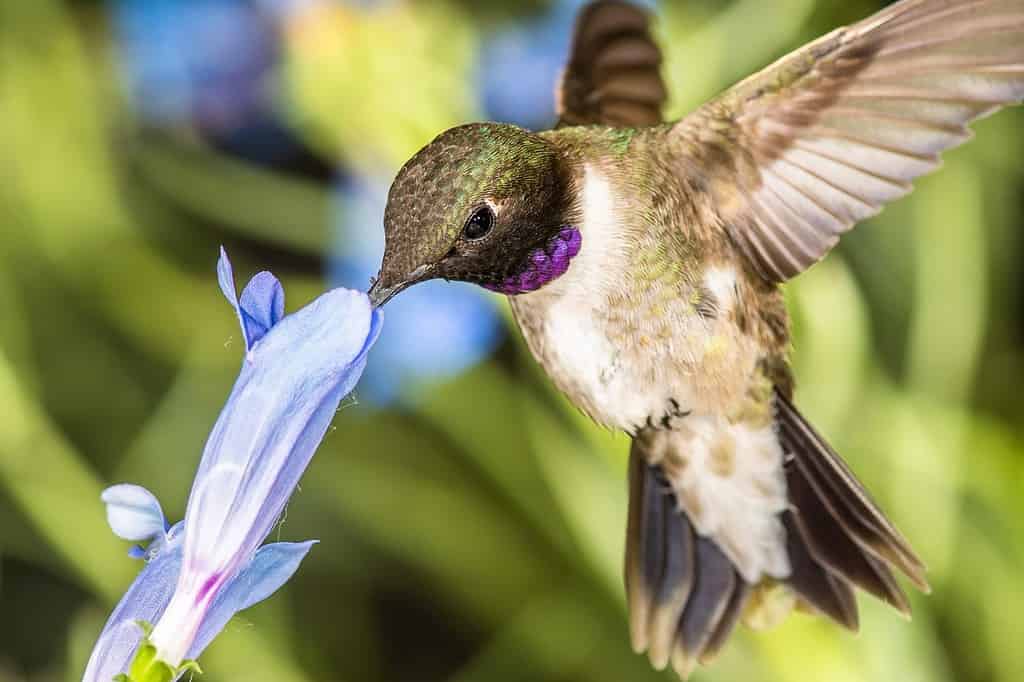
Black-chinned Hummingbirds usually arrive in northern California in April.
©rck_953/Shutterstock.com
The Black-chinned Hummingbird breeds across much of the western United States, along with a small portion of southwestern Canada and northern Mexico. They arrive in California in the spring, around April. At the end of their breeding season, they migrate to winter grounds in southwestern Mexico.
Calliope Hummingbird
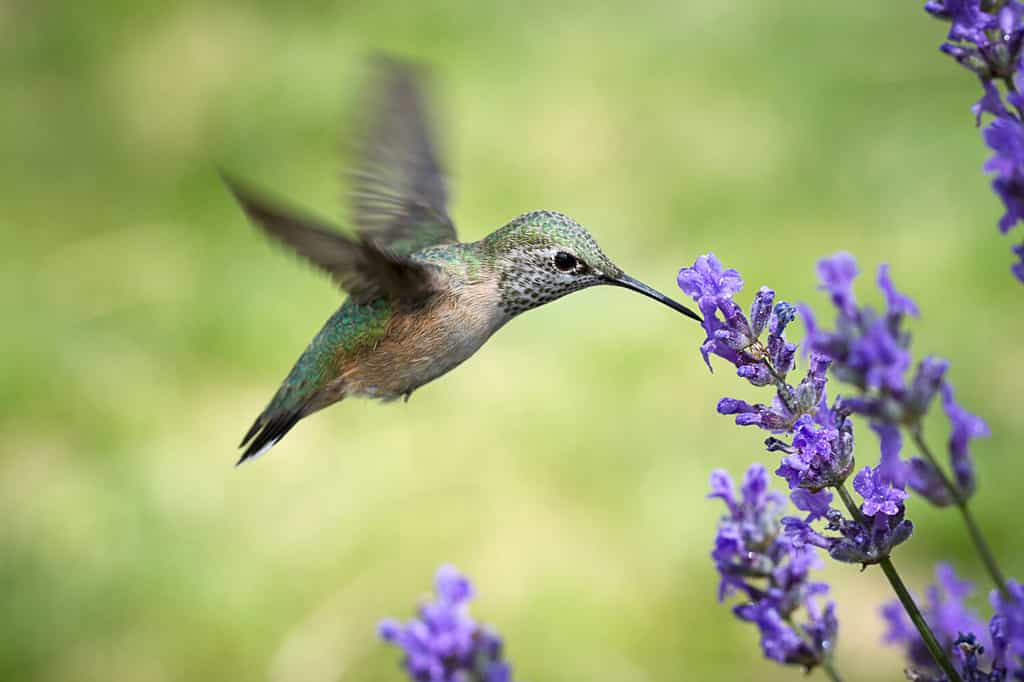
Migration of the Calliope Hummingbird begins in late winter and peaks in April.
©Gregory Johnston/Shutterstock.com
The Calliope Hummingbird returns from its winter habitat in southwestern Mexico from late January to April. It breeds in mountainous regions of the western United States and southern Canada. In California, this species sticks mainly to coniferous forests at elevations above 4,000 feet in the northern half of the state.
Broad-tailed Hummingbird
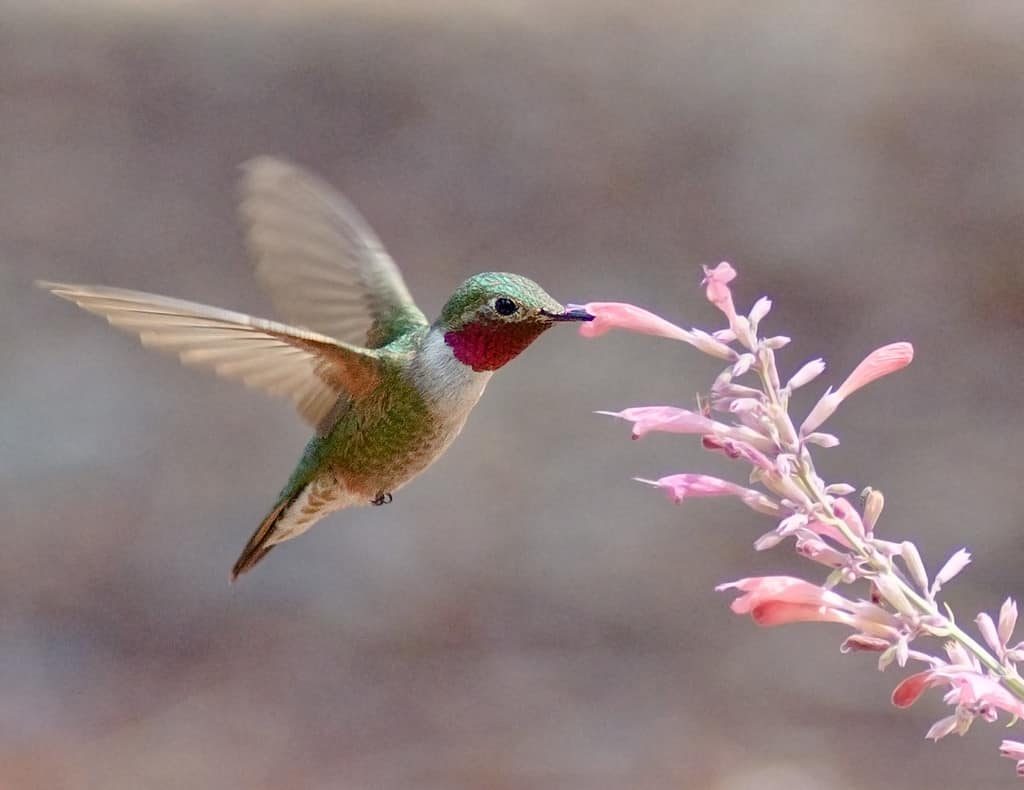
The Broad-tailed Hummingbird migrates into eastern California as early as March.
©M-C-C/iStock via Getty Images
The Broad-tailed Hummingbird, which breeds only at high elevations, arrives in California in March or April. This species barely makes an appearance in the state, only venturing over the eastern border into the White Mountains. The species migrates south to Mexico in the fall.
The photo featured at the top of this post is © Mason Maron /Shutterstock.com
Thank you for reading! Have some feedback for us? Contact the AZ Animals editorial team.







